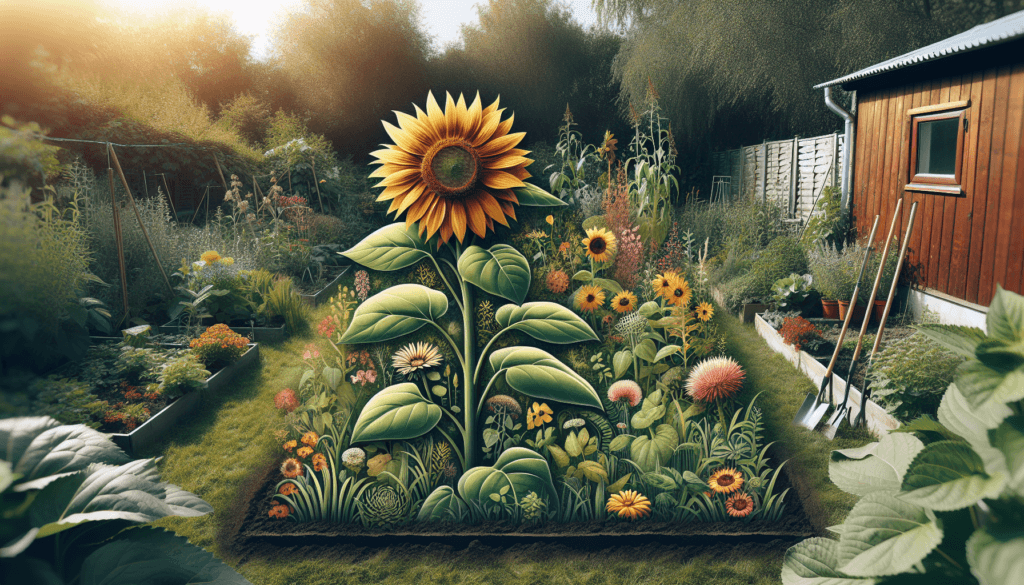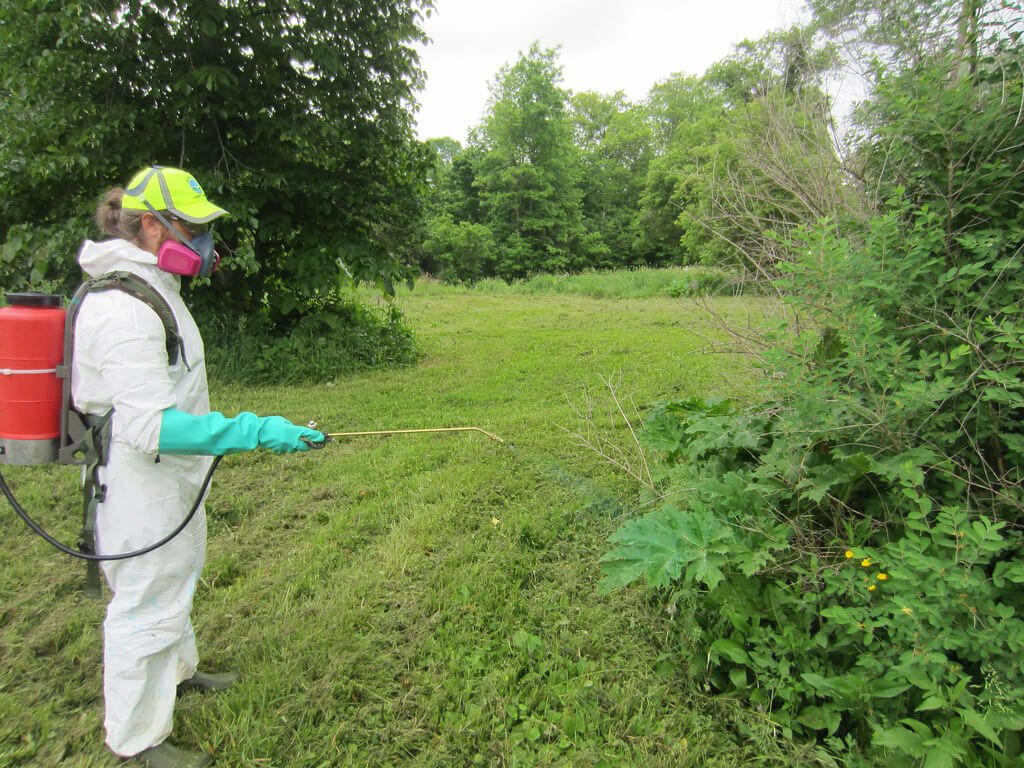Are you tired of spending hours pulling out pesky weeds in your garden? If you’re looking for a more environmentally friendly approach to weed control, then this article is for you! In “Natural Weed Control In Your Eco-Friendly Garden,” we’ll explore some simple and effective methods to keep your garden weed-free without the use of harmful chemicals. From mulching and hand-pulling to using vinegar solutions, you’ll discover the secrets to achieving a beautifully maintained, eco-friendly garden. Say goodbye to those annoying weeds and hello to a greener, healthier garden!
Types of Weeds
Annual Weeds
Annual weeds are a common nuisance in gardens. These weeds complete their life cycle in a single year, growing from seeds and producing seeds of their own within that same year. Some examples of annual weeds include crabgrass, chickweed, and lamb’s quarters. Since these weeds are fast-growing and can produce a large number of seeds, it is important to address them as soon as possible to prevent further spreading.
Perennial Weeds
Perennial weeds are another type of weed that can be found in gardens. Unlike annual weeds, perennial weeds have a longer lifespan and can survive for multiple years. These weeds have deep root systems that allow them to survive adverse conditions and continue growing year after year. Common examples of perennial weeds include dandelions, bindweed, and Canada thistle. Eradicating perennial weeds can be challenging, as they require persistent effort to remove their root systems completely.
Biennial Weeds
Biennial weeds have a two-year life cycle, growing foliage in their first year and producing flowers and seeds in their second year. Examples of biennial weeds include mullein, bull thistle, and garlic mustard. These weeds can be particularly troublesome as they may not show up until their second year, making it harder to prevent their spread. Identifying and removing biennial weeds in their first year of growth is essential to avoid future infestations.
Understanding Weed Control
Importance of Weed Control
Weed control is an essential aspect of maintaining a healthy and productive garden. Weeds compete with desired plants for sunlight, water, and nutrients, ultimately reducing the yield and vigor of cultivated plants. By controlling weeds, you ensure that your garden plants have the resources they need to grow and thrive. Additionally, proper weed control helps prevent the spread of invasive species and maintains the overall aesthetics of your garden.
Negative Effects of Chemical Weed Control
Chemical herbicides have long been a popular choice for weed control due to their effectiveness. However, they come with significant drawbacks. Chemical weed control can harm the environment by contaminating soil, water, and air. These herbicides often have toxic ingredients that can persist in the environment and pose risks to humans, pets, and beneficial insects. Moreover, overuse of herbicides can lead to herbicide resistance in weeds, rendering them ineffective over time.
Benefits of Natural Weed Control
Natural weed control methods provide a safer and more environmentally friendly alternative to chemical herbicides. These methods aim to manage weed populations without the use of synthetic chemicals, minimizing harm to the ecosystem and promoting sustainable gardening practices. Natural weed control methods utilize physical, biological, and organic approaches that work together to effectively manage weeds while preserving the health of your garden and the surrounding environment.
Preventive Measures
Mulching
Mulching is an effective preventive measure for weed control. By applying a layer of organic mulch, such as wood chips, straw, or leaves, around your plants, you create a barrier that inhibits weed growth. Mulch blocks sunlight from reaching weed seeds, preventing them from sprouting. It also helps retain soil moisture, reducing competition for water between weeds and desired plants. Additionally, organic mulch breaks down over time, enriching the soil with nutrients, further benefiting your garden plants.
Proper Plant Spacing
Proper plant spacing is crucial for weed control. When plants are spaced appropriately, they can form a dense canopy that shades the soil, limiting the amount of sunlight available for weed growth. Adequate spacing also promotes good air circulation, reducing the risk of diseases and pests. By giving your plants room to grow, you create an environment that is less hospitable to weeds.
Cover Crops
Cover crops are crops that are specifically grown to cover and protect the soil during periods when the main crops are not in the ground. These crops help suppress weed growth by shading the soil, competing for nutrients, and providing dense root systems that outcompete weeds. Cover crops, such as clover, buckwheat, and rye, can also improve soil health by adding organic matter and increasing beneficial microbial activity. By incorporating cover crops into your gardening practices, you can effectively control weeds while enhancing soil fertility.
Weed barrier fabric is a physical barrier that is placed on the soil surface to prevent weed growth. This fabric is typically made from woven or non-woven materials that allow air and water to pass through while blocking sunlight. By installing weed barrier fabric before planting, you create a weed-free zone around your plants, reducing the need for additional weed control measures. Weed barrier fabric is particularly useful in areas with persistent weed problems or in vegetable gardens where precise plant spacing is required.
Physical Weed Control Methods
Hand Pulling
Hand pulling is a simple and effective way to control weeds. It involves physically removing weeds by hand, taking care to remove the entire plant, including the root system. This method is best suited for small-scale weed control or when dealing with isolated weed infestations. Hand pulling is most successful when the soil is moist, making it easier to remove the entire weed without leaving any root fragments behind. Remember to properly dispose of the pulled weeds to prevent re-infestation.
Hoeing
Hoeing is a traditional method of weed control that involves using a sharp hoe to cut weeds at or just below the soil surface. This method is particularly effective for annual weeds and can be done quickly over larger areas. Hoeing not only cuts off the weed’s foliage but also disturbs the soil, preventing weed seed germination by bringing buried weed seeds to the surface where they are exposed to sunlight and desiccate. Regular hoeing can significantly reduce weed populations in your garden.
Tilling
Tilling is a more aggressive method of weed control that involves turning over the soil to bury weed seeds and disrupt weed root systems. This method is best used for initial garden preparation or in areas where you are starting from scratch. While tilling can effectively reduce weed populations, it should be done with caution to avoid excessive soil disturbance and the potential for soil erosion. Additionally, tilling may bring weed seeds to the surface, causing new weed problems if not properly managed.
Mowing
Mowing is a useful weed control method for lawns, meadows, or areas with tall weeds. Regular mowing keeps weed growth in check by removing the top foliage and preventing the plants from flowering and producing seeds. Set the mower at an appropriate height to prevent weed plants from shading and outcompeting desirable grass or plants. Mowing can help maintain a neat and well-manicured appearance while minimizing weed seed production.
Flame Weeding
Flame weeding, also known as thermal weeding, involves using a propane torch or flamethrower to apply direct heat to weeds, causing them to wither and die. This method is effective for controlling annual weeds, especially in areas where other physical weed control methods are not feasible. Flame weeding should be done with caution to avoid damage to desirable plants, and it is not suitable for dry or fire-prone areas. Proper safety precautions should always be followed when using flame weeding equipment.
Biological Weed Control Methods
Introducing Beneficial Insects
One biological method of weed control is to introduce beneficial insects into your garden. Certain insects, such as ladybugs, lacewings, and parasitic wasps, feed on weed seeds and larvae or act as predators to weed-consuming insects. By attracting and supporting these beneficial insects through habitat creation, such as planting native flowering plants, you can enhance their presence and reduce weed populations naturally. It is important to research and choose appropriate beneficial insects for your specific region and weed problems.
Using Livestock for Weed Control
In larger-scale agricultural settings or rural areas, using livestock for weed control can be an effective and sustainable method. Grazing animals, such as goats or sheep, can selectively consume and control weed species by browsing or trampling them. These animals can be rotated through different pastures or areas, targeting specific weed populations while also providing natural fertilizer with their manure. However, proper management and consideration for the livestock’s welfare and the surrounding ecosystem are necessary when implementing this method.
Bioherbicides
Bioherbicides are natural substances derived from living organisms that can suppress or kill weeds. These substances, often made from plant extracts or microorganisms, target specific weed species or growth stages, minimizing their impact on non-target plants. Bioherbicides offer a more targeted and environmentally friendly alternative to chemical herbicides. It is important to carefully follow product instructions and guidelines to ensure effective and safe application of bioherbicidal products.
Organic Herbicides
Vinegar
Vinegar is a commonly used organic herbicide that can effectively control weeds. The acetic acid in vinegar acts as a desiccant when applied to plant foliage, causing them to dry out and die. A higher concentration of vinegar, such as horticultural vinegar, generally yields better results. However, caution must be exercised when applying vinegar, as it can also damage or kill desired plants. It is recommended to apply vinegar on a warm and sunny day, avoiding contact with desirable plants and considering repeated applications for more stubborn weeds.
Salt
Salt, specifically table salt or rock salt, can be used as an organic herbicide to kill weeds. When salt is applied to the soil, it draws out water from plant tissues through osmosis, leading to dehydration and eventually killing the weeds. However, salt can have a long-lasting negative impact on soil health and fertility, so it should be used sparingly and with caution. Avoid using salt as an herbicide in areas where desirable plants grow or in regions with high rainfall, as it can leach into water bodies and harm the environment.
Corn Gluten Meal
Corn gluten meal is a natural byproduct of corn processing that has been found to have pre-emergent herbicidal properties. When applied to soil, corn gluten meal inhibits the germination of weed seeds by drying them out. This organic herbicide can be an effective tool for preventing weed growth in garden beds or lawns. However, it is important to note that corn gluten meal can also inhibit the germination of desired plants, so it should be used with caution and proper timing.
Natural Weed Control Recipes
Vinegar-Based Weed Killer
To create a vinegar-based weed killer, mix white vinegar with a small amount of liquid dish soap in a spray bottle. The dish soap helps the vinegar adhere to the weed foliage, maximizing its effectiveness. Shake the bottle to mix the solution thoroughly. On a sunny day, spray the vinegar solution directly onto the leaves of the weeds, taking care to avoid desired plants. Repeat the application as needed to ensure complete weed control.
Salt and Dish Soap Weed Killer
For a salt and dish soap weed killer, dissolve salt in warm water and add a few drops of liquid dish soap. Stir the mixture until the salt is fully dissolved. Transfer the solution to a spray bottle and apply it directly to the weeds, ensuring good coverage. Be cautious when using this recipe, as salt can have long-lasting effects on soil and can damage or kill desirable plants. Only apply the solution to areas where weed control is necessary and avoid contact with desirable plants.
Homemade Organic Weed Tea
To make a homemade organic weed tea, gather fresh weeds or weed trimmings and place them in a container or bucket. Cover the weeds with water and let them steep for a few days, similar to brewing tea. The resulting liquid can be used as a natural weed killer. Using a sprayer, apply the weed tea directly to the foliage of weeds, making sure to thoroughly wet the leaves. The high nutrient content from the decomposing weeds can also act as a natural fertilizer for your garden.
Companion Planting
Beneficial Plant Combinations
Companion planting involves strategically planting beneficial plant combinations to enhance weed control. Certain plant combinations can suppress weed growth through shading, allelopathy (the release of chemicals that inhibit weed growth), or by attracting beneficial insects that prey on weeds. For example, planting tall sunflowers or corn alongside low-growing beans can provide shade and limit weed growth. Additionally, planting aromatic herbs, like basil or rosemary, near susceptible plants can repel pests and deter weeds.
Repellent Plant Combinations
Repellent plant combinations involve planting specific plants that naturally repel weeds. For instance, planting marigolds around garden beds can discourage nematodes and certain weed species. Likewise, the strong scent of mint plants can deter some weeds. By strategically incorporating repellent plants into your garden, you create a less favorable environment for weeds, reducing the need for additional weed control measures.

Continuous Weed Management
Regular Inspection and Maintenance
Regular inspection and maintenance are crucial for effective weed management. Take the time to regularly walk through and examine your garden, identifying any emerging weeds. Promptly remove these weeds using the appropriate control methods, such as hand pulling or hoeing. By staying vigilant and addressing weeds early on, you prevent them from establishing a foothold and spreading throughout your garden.
Weeding Schedule
Establishing a weeding schedule can help you stay on top of weed control tasks. Set aside dedicated time each week or month to focus on weed management. Create a plan that outlines which areas need attention and which control methods are most suitable for different weed types. Consistency is key, so stick to your schedule and proactively manage weeds to keep them at bay and maintain a thriving and healthy garden.
Conclusion
In conclusion, natural weed control methods offer a safe and eco-friendly approach to managing weeds in your garden. Understanding the different types of weeds, the importance of weed control, and the potential negative effects of chemical herbicides is essential for implementing effective control strategies. Preventive measures, such as mulching and proper plant spacing, along with physical, biological, and organic weed control methods, provide a comprehensive and sustainable approach to weed management. By incorporating these methods, you can maintain a weed-free garden while preserving the overall health and balance of your ecosystem.



